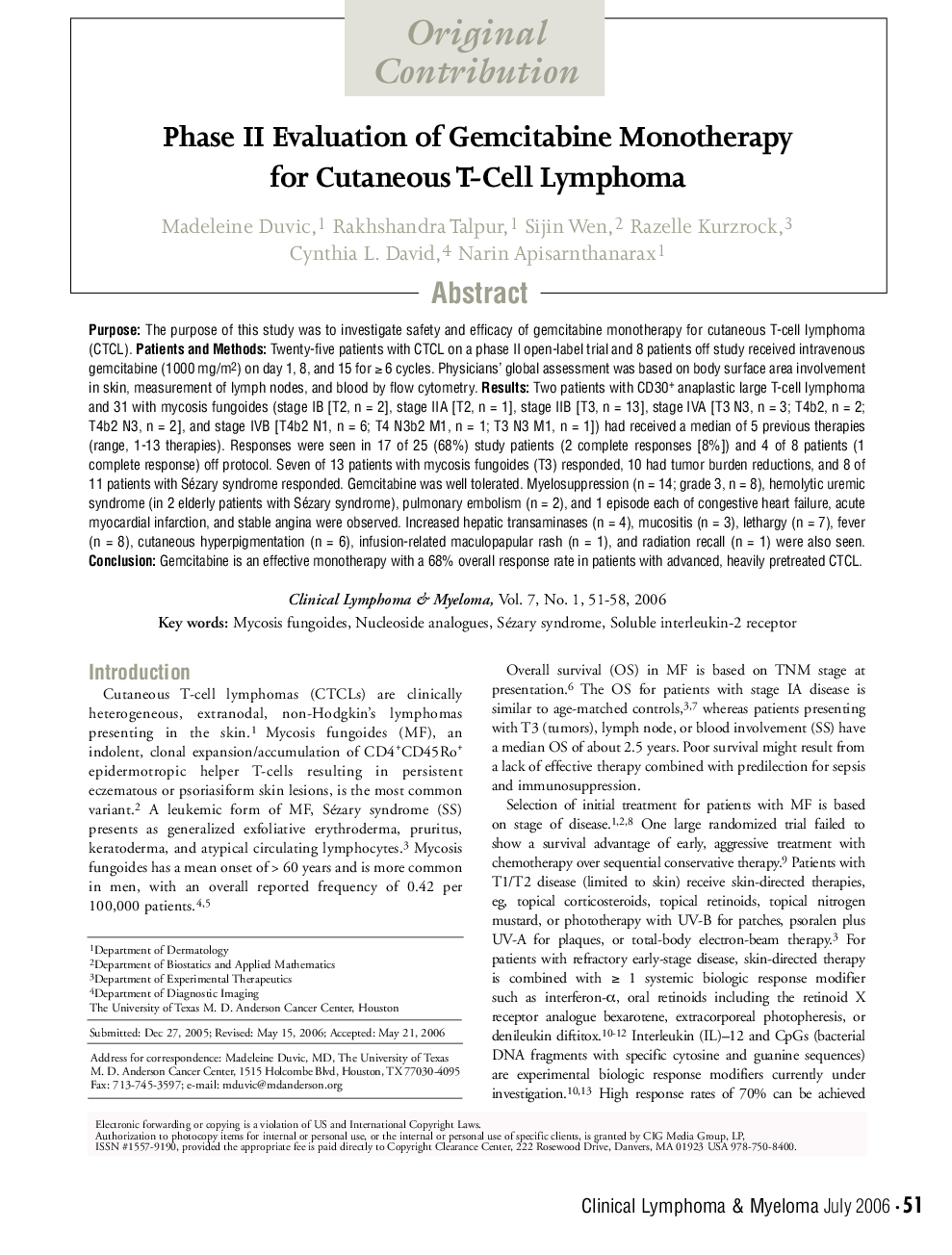| کد مقاله | کد نشریه | سال انتشار | مقاله انگلیسی | نسخه تمام متن |
|---|---|---|---|---|
| 2754121 | 1149752 | 2006 | 8 صفحه PDF | دانلود رایگان |

PurposeThe purpose of this study was to investigate safety and efficacy of gemcitabine monotherapy for cutaneous T-cell lymphoma (CTCL).Patients and MethodsTwenty-five patients with CTCL on a phase II open-label trial and 8 patients off study received intravenous gemcitabine (1000 mg/m2) on day 1, 8, and 15 for ≥ 6 cycles. Physicians' global assessment was based on body surface area involvement in skin, measurement of lymph nodes, and blood by flow cytometry.ResultsTwo patients with CD30+ anaplastic large T-cell lymphoma and 31 with mycosis fungoides (stage IB [T2, n = 2], stage IIA [T2, n = 1], stage IIB [T3, n = 13], stage IVA [T3 N3, n = 3; T4b2, n = 2; T4b2 N3, n = 2], and stage IVB [T4b2 N1, n = 6; T4 N3b2 M1, n = 1; T3 N3 M1, n = 1]) had received a median of 5 previous therapies (range, 1-13 therapies). Responses were seen in 17 of 25 (68%) study patients (2 complete responses [8%]) and 4 of 8 patients (1 complete response) off protocol. Seven of 13 patients with mycosis fungoides (T3) responded, 10 had tumor burden reductions, and 8 of 11 patients with Sézary syndrome responded. Gemcitabine was well tolerated. Myelosuppression (n = 14; grade 3, n = 8), hemolytic uremic syndrome (in 2 elderly patients with Sézary syndrome), pulmonary embolism (n = 2), and 1 episode each of congestive heart failure, acute myocardial infarction, and stable angina were observed. Increased hepatic transaminases (n = 4), mucositis (n = 3), lethargy (n = 7), fever (n = 8), cutaneous hyperpigmentation (n = 6), infusion-related maculopapular rash (n = 1), and radiation recall (n = 1) were also seen.ConclusionGemcitabine is an effective monotherapy with a 68% overall response rate in patients with advanced, heavily pretreated CTCL.
Journal: Clinical Lymphoma and Myeloma - Volume 7, Issue 1, July 2006, Pages 51-58